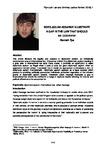Does Julian Assange Illustrate a Gap in Law that should be Codified?
| dc.contributor.author | Tye, Hamish | |
| dc.date.accessioned | 2017-04-03T08:59:45Z | |
| dc.date.accessioned | 2017-04-11T11:37:22Z | |
| dc.date.available | 2017-04-03T08:59:45Z | |
| dc.date.available | 2017-04-11T11:37:22Z | |
| dc.date.issued | 2016 | |
| dc.identifier.citation |
Tye, H. (2016) 'Does Julian Assange Illustrate a Gap in Law that should be Codified?', Plymouth Law and Criminal Justice Review, 8, pp. 218-238. Available at: https://pearl.plymouth.ac.uk/handle/10026.1/9031 | en_US |
| dc.identifier.issn | 2054-149X | |
| dc.identifier.uri | http://hdl.handle.net/10026.1/9031 | |
| dc.description.abstract |
This article dissects the legality and purpose of diplomatic asylum, an intrinsically controversial area of international law. It becomes evident that diplomatic asylum residing in a grey area of international law suits many states. It provides an opportunity to reject diplomatic asylum as illegal when it suits a state but grant diplomatic asylum when an opportune moment arises. I conclude that it would be appropriate to introduce a form of diplomatic asylum internationally. Diplomatic asylum appears as a legal concept which persists in providing politically persecuted individuals protection regardless of the criticism grants of diplomatic asylum receive. Therefore Julian Assange illustrates a gap in international law should be codified in a range of regional treaties allowing for cultural and political difference to be accounted for. | en_US |
| dc.language.iso | en | en_US |
| dc.publisher | University of Plymouth | |
| dc.rights | Attribution 4.0 International (CC BY 4.0) | * |
| dc.rights.uri | https://creativecommons.org/licenses/by/4.0/ | * |
| dc.subject | diplomatic asylum | en_US |
| dc.subject | international law | en_US |
| dc.subject | Julian Assange | en_US |
| dc.title | Does Julian Assange Illustrate a Gap in Law that should be Codified? | en_US |
| dc.type | Article | en_US |
| dc.type | Article | |
| plymouth.volume | 8 | |
| plymouth.journal | The Plymouth Law & Criminal Justice Review |



